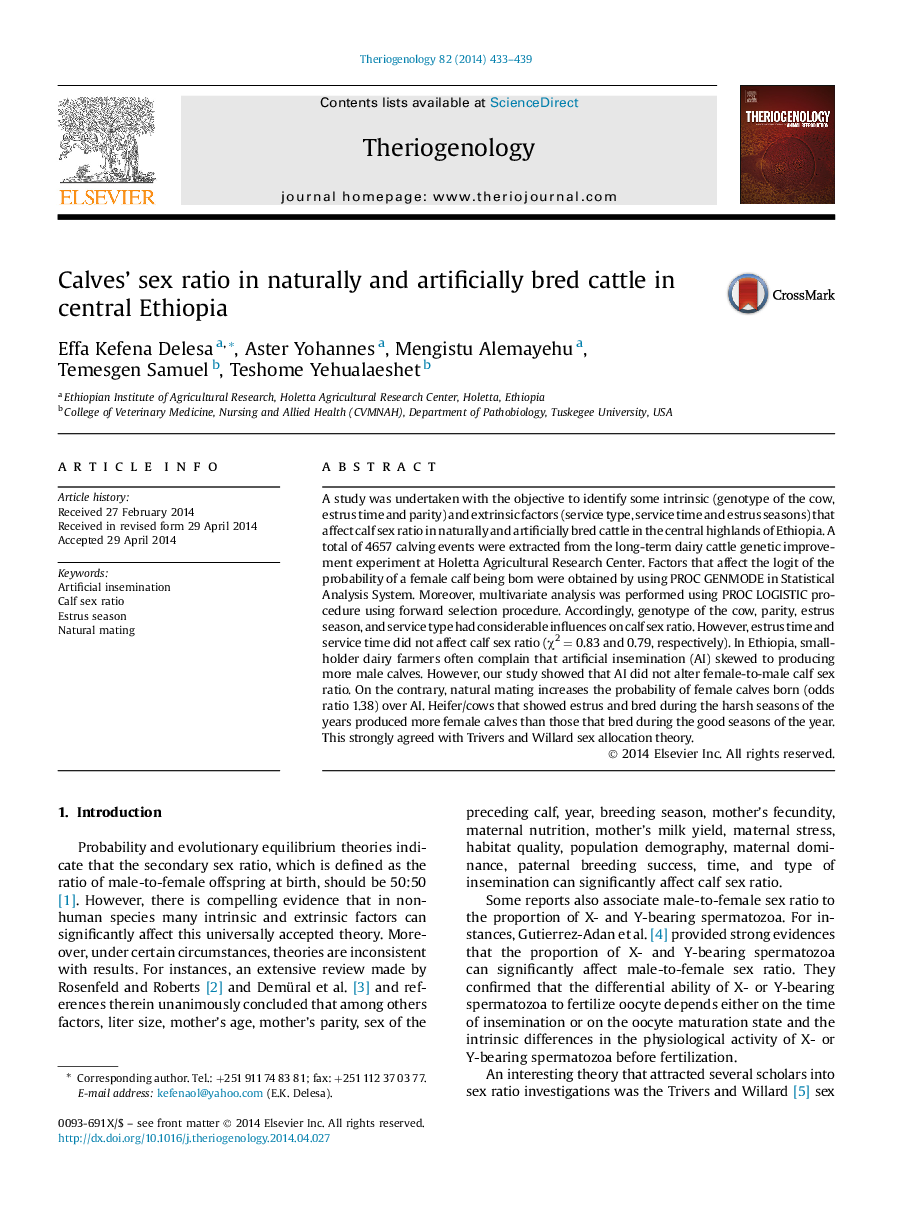| کد مقاله | کد نشریه | سال انتشار | مقاله انگلیسی | نسخه تمام متن |
|---|---|---|---|---|
| 2095091 | 1082073 | 2014 | 7 صفحه PDF | دانلود رایگان |
A study was undertaken with the objective to identify some intrinsic (genotype of the cow, estrus time and parity) and extrinsic factors (service type, service time and estrus seasons) that affect calf sex ratio in naturally and artificially bred cattle in the central highlands of Ethiopia. A total of 4657 calving events were extracted from the long-term dairy cattle genetic improvement experiment at Holetta Agricultural Research Center. Factors that affect the logit of the probability of a female calf being born were obtained by using PROC GENMODE in Statistical Analysis System. Moreover, multivariate analysis was performed using PROC LOGISTIC procedure using forward selection procedure. Accordingly, genotype of the cow, parity, estrus season, and service type had considerable influences on calf sex ratio. However, estrus time and service time did not affect calf sex ratio (χ2 = 0.83 and 0.79, respectively). In Ethiopia, smallholder dairy farmers often complain that artificial insemination (AI) skewed to producing more male calves. However, our study showed that AI did not alter female-to-male calf sex ratio. On the contrary, natural mating increases the probability of female calves born (odds ratio 1.38) over AI. Heifer/cows that showed estrus and bred during the harsh seasons of the years produced more female calves than those that bred during the good seasons of the year. This strongly agreed with Trivers and Willard sex allocation theory.
Journal: Theriogenology - Volume 82, Issue 3, August 2014, Pages 433–439
